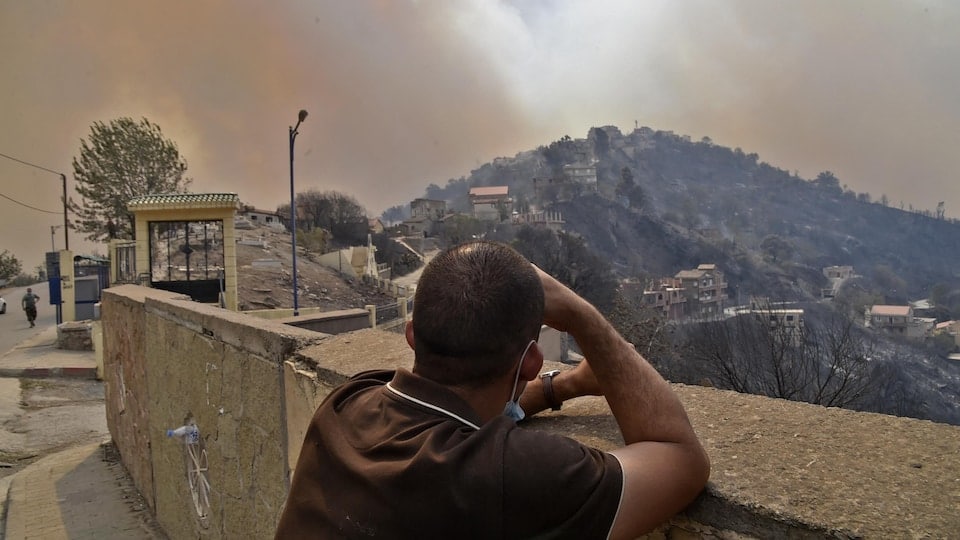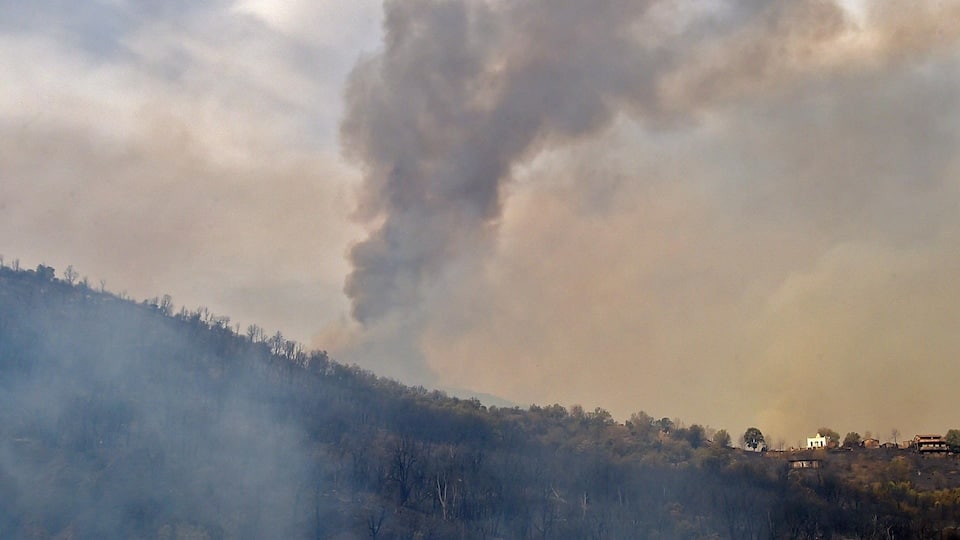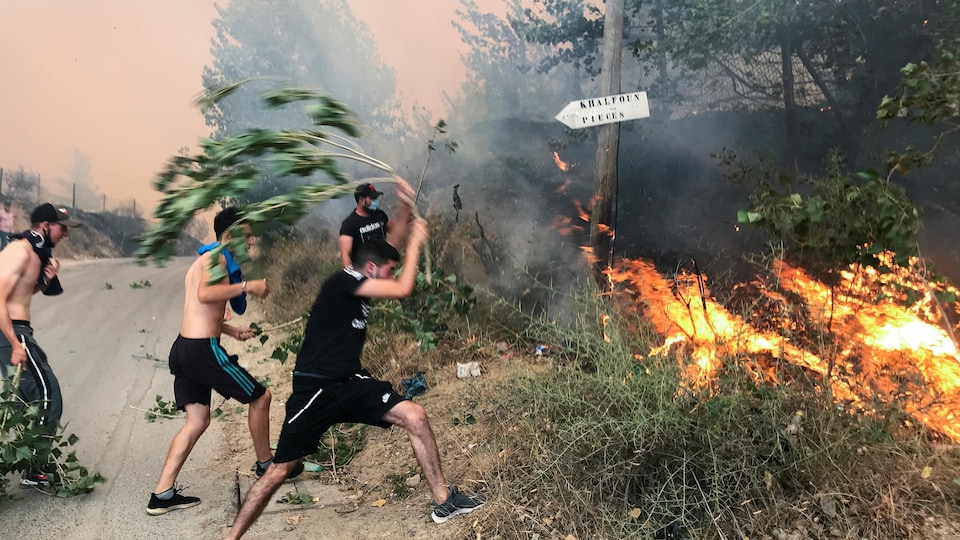At least 42 people, including 17 civilians and 25 soldiers, have lost their lives in the fires ravaging northern Algeria, especially Kabylia, authorities said on Tuesday, citing fires “of criminal origin” stoked by a heat wave episode.
The fires, which began Monday evening, killed 17 civilians in Tizi Ouzou and Sétif, according to a new assessment announced by the Prime Minister, Aïmène Benabderahmane, in the evening.
President Abdelmadjid Tebboune lamented on Twitter the deaths of 25 soldiers who tried to put out the fires, offering his condolences to the families of the victims.
“It is with great sadness that I learned of the martyrdom of 25 soldiers after they managed to rescue more than a hundred citizens from the flames, in the mountains of Bejaïa and Tizi Ouzou,” wrote President. Public television then gave a similar assessment.

A man watches smoke billowing from a forest fire in the hills of Kabylia as firefighters tackle more than 31 fires amid scorching temperatures and drought.
Photo: Getty Images / RYAD KRAMDI
Earlier, the Ministry of National Defense had for its part reported the loss of “18 combatants” in a statement, specifying that 13 other soldiers suffered burns to varying degrees.
Their intervention “made it possible to save 110 citizens from the flames: men, women and children”, adds the ministry.
About fifty fires “of criminal origin” and fueled by a heatwave episode began Monday evening in northern Algeria, especially in Kabylia, according to the Minister of the Interior, Kamel Beldjoud, who surrendered. accompanied by a ministerial delegation to Tizi Ouzou, one of the most populous cities in the region.
“Fifty starts of fire at the same time, it is impossible. These fires are of criminal origin”, affirmed Mr. Beldjoud.
People try to put out a fire in the mountainous region of Tizi Ouzou, east of Algiers.
Photo: Reuters / ABDELAZIZ BOUMZAR
According to Prime Minister Benabderahmane, more than 70 fires have broken out in 18 wilayas (prefectures) in the north of the country.
The cities of Bouira, Sétif, Khenchela, Guelma, Bejaïa, Bordj Bou Arreridj, Boumerdès, Tiaret, Medea, Tébessa, Blida and Skikda are affected, the general directorate of civil protection said on Twitter.
Algerian public radio announced the arrest of three “arsonists” in Médéa (north), where a fire also broke out. A fourth was arrested in Annaba, according to APS.
Heatwave and lack of water
Winds spread fires and complicate the task of rescuers, said Youcef Ould Mohamed, the local forest conservator, quoted by APS.
Algeria is experiencing a scorching summer marked by water scarcity in the country. Weather services predict temperatures of up to 46 ° C on Tuesday.
Impressive images of the fires are circulating on social networks, with charred trunks, dying herds and villages surrounded by smoke.
During a Council of Ministers held on July 25, President Abdelamdjid Tebboune ordered the development of a bill severely punishing those responsible for arson in forests, with sentences of up to 30 years in prison. or even life imprisonment if the fire has caused the death of individuals.
Smoke rises from a forest fire.
 Smoke rises from a forest fire in the wooded hills of the Kabylie region, east of the capital Algiers, on August 10, 2021.
Smoke rises from a forest fire in the wooded hills of the Kabylie region, east of the capital Algiers, on August 10, 2021.
Photo: Getty Images / RYAD KRAMDI
In early July, three people suspected of being involved in fires that devastated 1,500 hectares of forests in the Aurès massif (north-eastern Algeria) were arrested.
The largest country in Africa, Algeria has only 4.1 million hectares of forest, with a meager reforestation rate of 1.76%.
Every year, the country is affected by forest fires. In 2020, nearly 44,000 hectares of coppice went up in smoke. The authorities had announced that they had arrested several perpetrators of arson.
The fires that are increasing across the globe are associated with various phenomena anticipated by scientists due to global warming.
The increase in temperature, the increase in heat waves and the drop in precipitation in places, it is an ideal combination for the development of fires.















